Skimmer Dragonfly
- April 4, 2024
- 0 comment
The Skimmer Dragonfly, known for its mesmerizing aerial displays and vibrant colors, is a fascinating insect species found across various continents. With its elongated body, large multifaceted eyes, and intricate wings, the Skimmer Dragonfly is a true marvel of nature. These agile creatures inhabit a diverse range of habitats, from freshwater lakes and ponds to slow-moving streams and marshes. Throughout their life cycle, Skimmer Dragonflies undergo remarkable transformations, starting as aquatic nymphs before emerging as sleek-winged adults capable of swift flight. They play a vital role in ecosystem balance by preying on pesky insects like mosquitoes, thus serving as natural pest controllers.
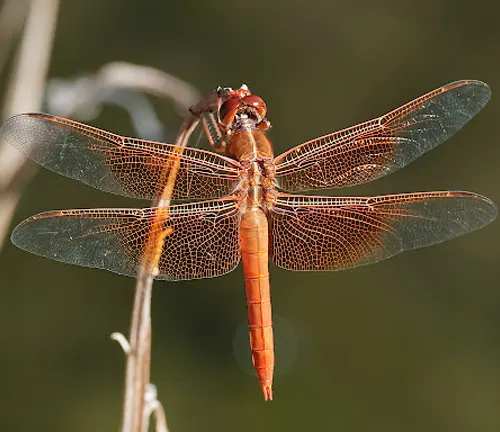
Despite facing threats from habitat loss and environmental degradation, Skimmer Dragonflies continue to captivate human interest, serving as subjects of study and admiration for enthusiasts and scientists alike. Through their beauty, behavior, and ecological importance, Skimmer Dragonflies offer a window into the intricate workings of the natural world, reminding us of the wonders that abound in the world of insects.
| Specifications | Description |
|---|---|
| Scientific Name | Order: Odonata, Family: Libellulidae |
| Body Length | Varies from a few centimeters to over 10 centimeters |
| Wingspan | Ranges from a few inches to over 6 inches |
| Body Structure | Slender, elongated body with three distinct parts: head, thorax, and abdomen |
| Eyes | Large, multifaceted eyes providing excellent vision |
| Coloration | Wide range of vibrant colors and intricate patterns on wings |
| Habitat | Found near freshwater habitats such as lakes, ponds, rivers, and marshes |
| Distribution | Global distribution across continents, except Antarctica |
| Life Cycle | Egg -> Nymph -> Adult |
| Diet | Predatory, feeding on small insects like mosquitoes, flies, and butterflies |
| Behavior | Agile fliers capable of rapid movements in all directions |
| Role in Ecosystem | Apex predators regulating insect populations |
| Conservation Status | Facing threats from habitat loss, pollution, and climate change |
| Cultural Significance | Symbolic representation of transformation, freedom, and spirituality in various cultures |
| Fun Facts | – Fossil records date back to the Jurassic period<br>- Some species are migratory, traveling hundreds of miles<br>- Formidable hunters capable of capturing prey mid-flight |
Skimmer Dragonfly: Exploring Nature’s Aerial Acrobat
Dragonflies, often referred to as the jewels of the insect world, are captivating creatures with their iridescent wings and agile flight. Among the diverse species of dragonflies, the skimmer dragonfly stands out for its distinctive characteristics and behavior.
Physical Characteristics
Body Structure
Skimmer dragonflies have a distinctive body structure characterized by their elongated and slender shape. Their bodies are segmented into three main parts: the head, thorax, and abdomen. The head is equipped with large, multifaceted eyes that provide excellent vision, allowing them to detect prey and navigate their surroundings effectively. The thorax is where the powerful muscles responsible for flight are located, enabling skimmer dragonflies to perform agile maneuvers in the air. The abdomen, which is typically longer than the other body segments, houses the reproductive organs and plays a crucial role in regulating buoyancy during flight and reproduction.
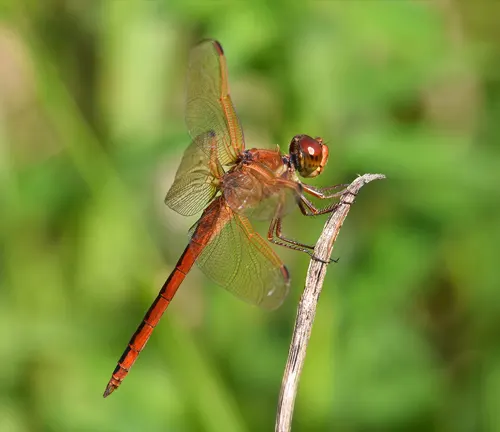
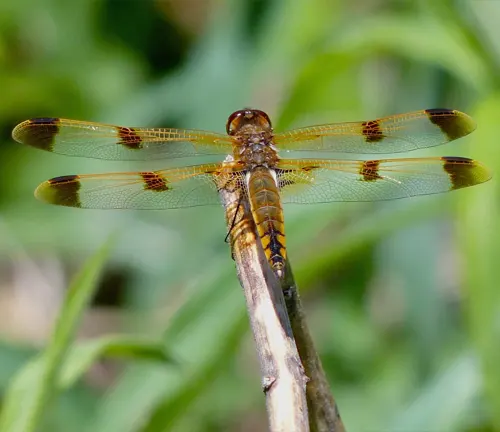
Wingspan and Coloration
Skimmer dragonflies exhibit a diverse range of wingspans and coloration patterns. The wingspan of skimmer dragonflies can vary from a few inches to over six inches, depending on the species and individual variations. Their wings are transparent and membranous, with intricate venation patterns that provide structural support and flexibility during flight. Additionally, skimmer dragonflies display a wide array of colors on their wings, ranging from shades of blue, green, and red to more subtle hues such as brown and black. These vibrant colors serve various purposes, including camouflage, mate attraction, and species recognition. Overall, the combination of their streamlined body structure and colorful wings makes skimmer dragonflies both aesthetically pleasing and highly adapted for their aerial lifestyle.
Habitat and Distribution
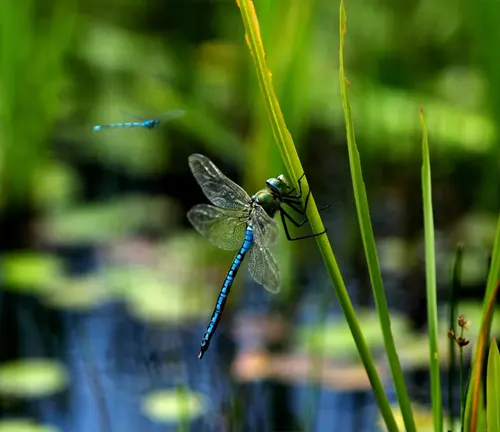

Skimmer dragonflies are versatile insects that inhabit a wide range of freshwater habitats across the globe. They are commonly found near lakes, ponds, rivers, streams, marshes, and wetlands, where they can find suitable breeding and foraging grounds. These habitats provide the necessary resources for skimmer dragonflies to complete their life cycle, including clean water for egg-laying and aquatic vegetation for nymphs to thrive.
Their distribution spans across continents, with different species occupying specific geographic regions. Skimmer dragonflies can be found in North America, South America, Europe, Asia, Africa, and parts of Australia. Their adaptability to various environmental conditions allows them to thrive in diverse landscapes, from temperate forests to tropical rainforests and even arid deserts.
Life Cycle
Egg Stage
The life cycle of a skimmer dragonfly begins with the egg stage, where females lay their eggs in or near freshwater habitats such as ponds, lakes, or streams. These eggs are typically deposited in aquatic vegetation or submerged objects to provide protection and support. Skimmer dragonfly eggs are small and oval-shaped, often resembling tiny specks or elongated capsules. Depending on the species and environmental conditions, the duration of the egg stage can vary, ranging from a few days to several weeks. During this stage, the eggs undergo development, eventually hatching into aquatic larvae known as nymphs.
Larval Stage
After hatching from the eggs, skimmer dragonflies enter the larval stage, where they spend the majority of their life cycle underwater as nymphs. Skimmer dragonfly nymphs have elongated bodies with six legs and a specialized lower lip called a labium, which they use to grasp prey. They are voracious predators, feeding on a variety of small aquatic organisms such as mosquito larvae, tadpoles, small fish, and other invertebrates. As they grow and develop, skimmer nymphs undergo several molts, shedding their exoskeletons to accommodate their increasing size. The duration of the larval stage varies depending on factors such as temperature, food availability, and species-specific characteristics.


Adult Stage
Upon completing their development as nymphs, skimmer dragonflies emerge from the water as winged adults, marking the beginning of the adult stage. Adult skimmer dragonflies have fully developed wings and reproductive organs, allowing them to engage in aerial mating rituals and reproduce. They are skilled fliers, capable of rapid movements in all directions as they search for mates, defend territories, and forage for food. Skimmer dragonflies primarily feed on flying insects such as mosquitoes, flies, butterflies, and other small insects. The adult stage of skimmer dragonflies is relatively short compared to their time spent as nymphs, with individuals typically living for several weeks to a few months, depending on environmental factors and species-specific characteristics.
Behavior and Diet
Skimmer dragonflies exhibit agile and swift flight, capable of maneuvering in all directions with precision. They are primarily diurnal, being most active during the daytime when they hunt for prey and engage in mating behaviors. Skimmer dragonflies are voracious predators, feeding on a wide variety of flying insects including mosquitoes, flies, butterflies, and smaller dragonflies. They are known for their ability to catch prey mid-flight using their specialized legs and mandibles.
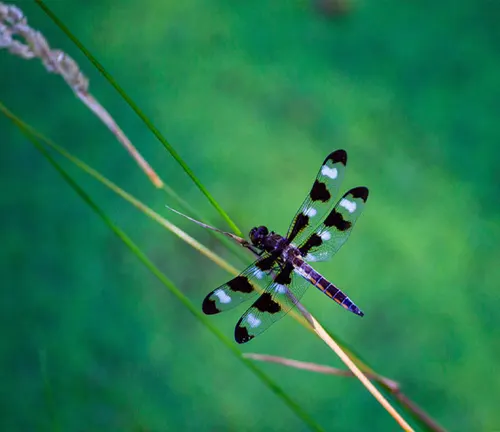
Role in Ecosystem
Skimmer dragonflies play a crucial role in maintaining the balance of freshwater ecosystems. As apex predators, they help regulate insect populations, particularly those of mosquitoes and other pest species. By controlling insect abundance, skimmer dragonflies indirectly influence the dynamics of plant communities and contribute to overall ecosystem health.
Importance in Controlling Pest Populations
Skimmer dragonflies are natural predators of pest insects such as mosquitoes, making them valuable allies in pest control efforts. By preying on mosquitoes and other nuisance insects, skimmer dragonflies help reduce the spread of vector-borne diseases and alleviate nuisance biting for humans and animals alike. Their role in controlling pest populations can significantly benefit human health and agricultural productivity.
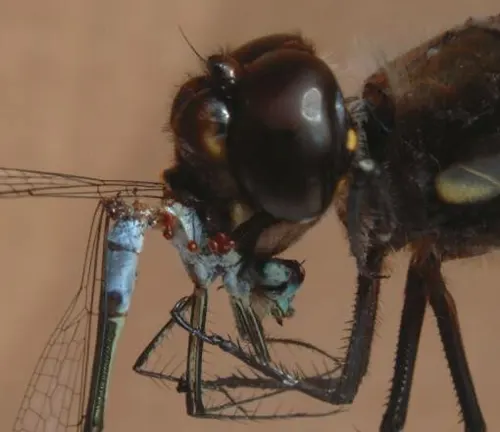
Threats and Conservation Status
Despite their ecological importance, skimmer dragonflies face various threats to their survival. Habitat loss and degradation due to urbanization, agricultural expansion, and pollution are significant concerns. Climate change also poses risks by altering habitat suitability and disrupting breeding patterns. Additionally, indiscriminate pesticide use and habitat fragmentation further threaten skimmer dragonfly populations. Conservation efforts focused on habitat preservation, pollution reduction, and public awareness are essential for safeguarding these fascinating insects.
Interactions with Humans
Skimmer dragonflies often capture the fascination of humans with their vibrant colors, graceful flight, and ecological significance. They are admired by nature enthusiasts, photographers, and scientists alike for their beauty and behavior. Skimmer dragonflies also play a role in citizen science initiatives, where volunteers contribute to monitoring and conservation efforts through observations and data collection.
Fascination and Study of Skimmer Dragonflies
Skimmer dragonflies have long intrigued scientists and naturalists due to their diverse adaptations, complex behaviors, and evolutionary history. Researchers study various aspects of skimmer dragonfly biology, including their physiology, behavior, ecology, and genetics. Understanding skimmer dragonflies provides insights into broader ecological principles and helps inform conservation strategies.
Comparison with Other Dragonfly Species
While skimmer dragonflies share many characteristics with other dragonfly species, they also exhibit unique traits that distinguish them from their counterparts. Comparative studies help elucidate the diversity, evolution, and ecological roles of different dragonfly species. Understanding the similarities and differences among dragonfly taxa contributes to our knowledge of insect biodiversity and ecosystem functioning.
Cultural Significance
Skimmer dragonflies hold symbolic significance in various cultures around the world. They are often associated with concepts such as transformation, freedom, and spirituality. In folklore and mythology, dragonflies are portrayed as symbols of change, adaptability, and renewal. Their graceful flight and vibrant colors have inspired artists, poets, and storytellers across different societies, reflecting the universal fascination with these enchanting insects.
Fun Facts and Trivia
- Skimmer dragonflies have been around for millions of years, with fossil records dating back to the Jurassic period.
- Some species of skimmer dragonflies are migratory, traveling hundreds of miles during seasonal movements.
- Despite their delicate appearance, skimmer dragonflies are formidable hunters, capable of capturing prey mid-flight with remarkable precision.
Tips for Observing Skimmer Dragonflies
- Visit wetland areas such as ponds, lakes, and rivers, especially during the warmer months when dragonfly activity is at its peak.
- Bring binoculars or a camera with a telephoto lens to get a closer look at skimmer dragonflies without disturbing them.
- Be patient and observant, as skimmer dragonflies may exhibit fascinating behaviors such as territorial disputes and courtship rituals.
Different Species
Common Skimmer
(Orthetrum cancellatum)
Found across Europe and Asia, the Common Skimmer is known for its distinctive blue-gray coloration and broad wings.
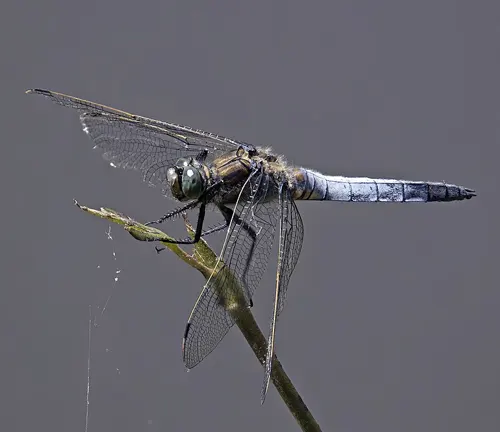
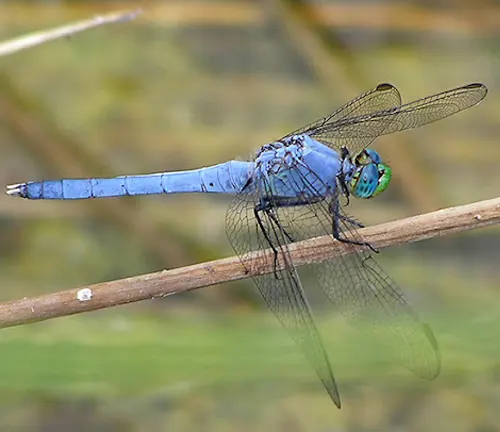
Eastern Pondhawk
(Erythemis simplicicollis)
Native to North and Central America, the Eastern Pondhawk exhibits striking green coloration in males and muted green or brown in females.
Red-veined Darter
(Sympetrum fonscolombii)
Found in Europe, North Africa, and parts of Asia, the Red-veined Darter is characterized by its bright red abdomen and clear wings with red veins.
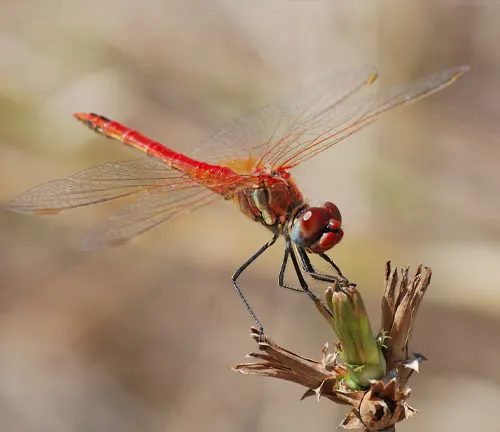
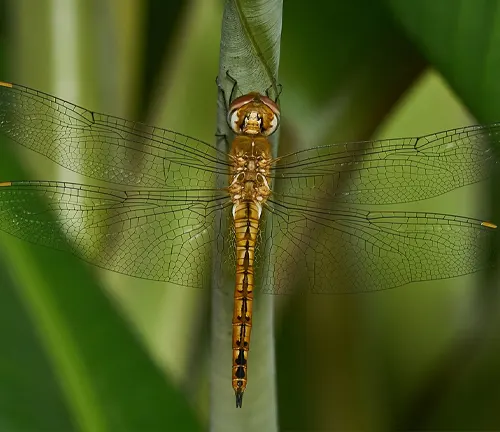
Wandering Glider
(Pantala flavescens)
With a global distribution, the Wandering Glider is one of the most widespread dragonfly species, known for its migratory behavior and pale yellow-brown coloration.
Four-spotted Skimmer
(Libellula quadrimaculata)
Native to North America and Europe, the Four-spotted Skimmer features four dark spots on its wings and a distinctive black stripe down the length of its abdomen.
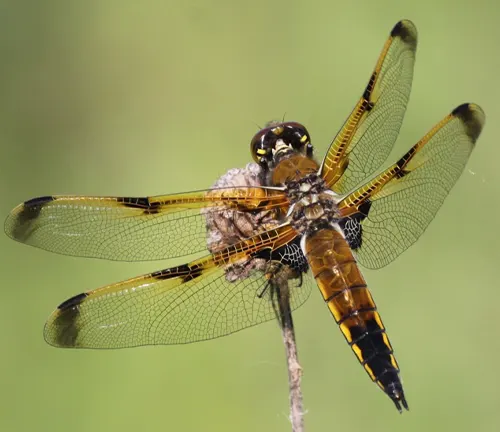

Scarlet Skimmer
(Crocothemis servilia)
Found in Asia and parts of Africa, the Scarlet Skimmer is named for its vibrant red coloration, with males displaying bright scarlet abdomens.
Blue Dasher
(Pachydiplax longipennis)
Native to North and Central America, the Blue Dasher is known for its bright blue abdomen in males and greenish-yellow in females.
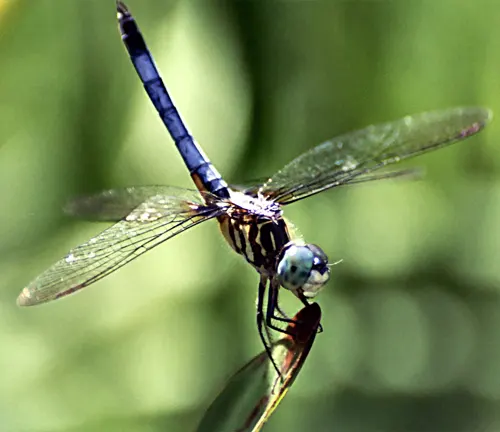
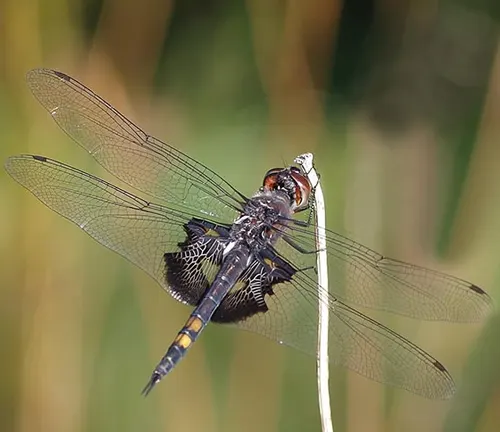
Black Saddlebags
(Tramea lacerata)
Found across North America, the Black Saddlebags features distinctive black patches at the base of its transparent wings.
Frequently Asked Question (FAQs)
- Are skimmer dragonflies harmful to humans?
Skimmer dragonflies are not harmful to humans. In fact, they are beneficial insects that help control pest populations by preying on mosquitoes and other nuisance insects. - Can skimmer dragonflies sting or bite?
Skimmer dragonflies do not sting or bite humans. They are harmless insects that pose no threat to people. - How long do skimmer dragonflies live?
The lifespan of skimmer dragonflies varies depending on the species and environmental factors. In general, they can live for several months to a few years. - Do skimmer dragonflies migrate?
Some species of skimmer dragonflies are known to migrate, traveling significant distances during seasonal movements. - What habitats do skimmer dragonflies prefer?
Skimmer dragonflies are commonly found near freshwater habitats such as lakes, ponds, rivers, and marshes. They require clean water for breeding and feeding purposes. - How do skimmer dragonflies contribute to the ecosystem?
Skimmer dragonflies play a vital role in ecosystem balance by preying on insects like mosquitoes, flies, and butterflies. As apex predators, they help regulate insect populations and maintain ecological stability. - Are skimmer dragonflies endangered?
While some species of skimmer dragonflies may face threats from habitat loss and environmental degradation, many populations remain stable. Conservation efforts focus on protecting their habitats and raising awareness about their ecological importance. - What is the significance of skimmer dragonflies in culture and folklore?
Skimmer dragonflies hold symbolic significance in various cultures, representing concepts such as transformation, freedom, and spirituality. They feature prominently in folklore, art, and literature across different societies. - How can I attract skimmer dragonflies to my garden or backyard?
Creating a habitat with suitable water sources, such as a pond or shallow pool, and planting native vegetation can attract skimmer dragonflies. Providing perches and sheltered areas can also encourage these insects to visit your outdoor space. - What are some interesting facts about skimmer dragonflies?
Skimmer dragonflies have been around for millions of years, with fossil records dating back to the Jurassic period. Some species are migratory, traveling hundreds of miles during seasonal movements. Despite their delicate appearance, skimmer dragonflies are formidable hunters, capable of capturing prey mid-flight with remarkable precision.



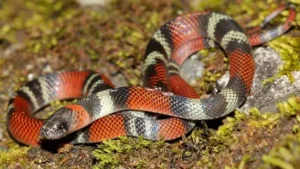
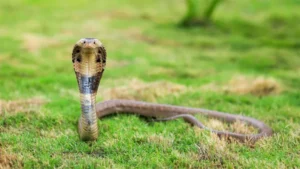
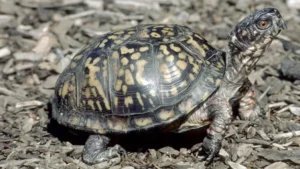

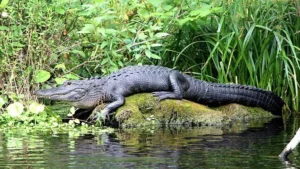




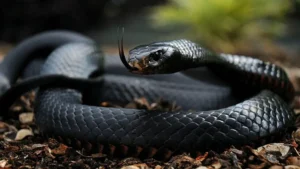
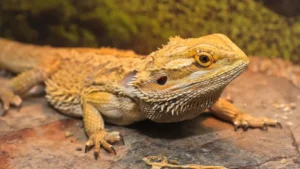
Leave your comment